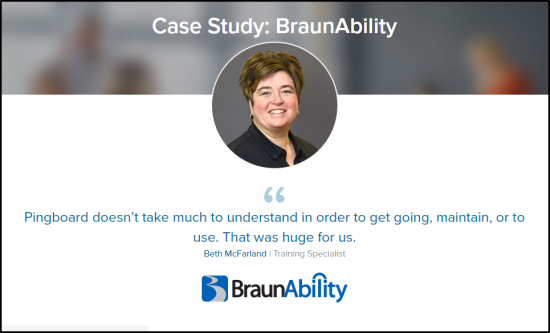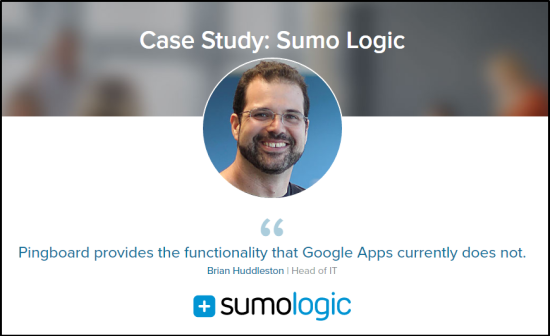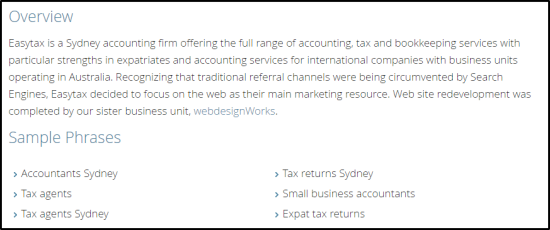How do you write a strong case study without any metrics?
What do you do when your client can’t—or won’t—give you metrics (like KPIs) to put in a case study?
If your answer is “scrap the story,” a lot of (wrong) people would agree with you.
At Case Study Buddy, we take a different approach (that you can steal): If you make stories relatable and compelling, they’ll do the same heavy lifting in your sales cycle – whether you have metrics or not.
Here are five tips to create compelling metric-less case studies:
- Shift your thinking to Before/During/After (BDA)
- Lead with social proof
- Focus on personal, human stories
- Use a “Call-and-Answer” approach
- Gather experiences, not accolades
These tips will help you craft a great story, even if NDAs or tight-lipped interviewees veto KPI inclusion.
Everyone loves to showcase a skyrocketing revenue or conversion metric.
But when getting concrete success metrics to share in a case study can feels like herding cats with Red Bull for blood, a well-told story can pull in and persuade prospective customers equally well.
Of course, you came here for the “how”, and that’s exactly what I’m going to give you, along with some examples you can learn from along the way.
1. Shift your thinking to Before/During/After (BDA)
When you’ve got the benefit of big numbers, a few bullets will carry you a long way. But when you need to tell a story, a narrative arc makes a whole lot more sense.
That means following the customer journey from the start:
- Before they found your solution,
- During the decision-making process and early days, and
- After they implemented and saw results
This is the format you’re going to use when you interview your clients, asking them about their experiences at every stage – and the approach you’ll use when writing the case study.
Now, you might be thinking – “Hold up! Interview?!”
Many businesses believe they can write their case studies without involving their clients in the process—and that’s a huge mistake. Your clients will always be more persuasive than you are.
That’s because they’re a third party who can substantiate any claims to greatness you try to make. You can’t tell their story without them.
On that point…
2. Lead with social proof
Here’s how you start using the quotes you get from that interview:
Where traditional case studies might lead with a big metric (“How we helped X company grow Y%”), narrative case studies can use a quote from a client to set the stage and hook people in.
For example, check out this Varonis case study title page:

There are few industries more sensitive about KPIs than cybersecurity. In fact, this customer only agreed to be interviewed if they could remain anonymous.
Most companies would kill the case study right there. No company name? No logo? No headshot? What’s the point!
But Varonis understands that the logo is WAY less important than the results. They helped this Casino detect and prevent a cyberattack in less time than it takes to watch an episode of Breaking Bad. You don’t need concrete KPIs to know that they saved this casino potentially millions of dollars.
And that quote? – :chef’s kiss:
We don’t know who the speaker is, except that they’re a “network admin.” But despite that anonymity, the quote immediately makes an impact with heavy social proof. The promise of going from ignorance to complete control over your environment is enticing and their claim is impossible to ignore.
And this is an extreme example.
In most other cases, even if we don’t have metrics, we are able to leverage powerful logos and trust-building headshots. For example:

This quote from Beth speaks directly to Pingboard’s ease of use – a huge pain point for people looking for a software to solve to their staff communication problems. If I’m someone who shares that concern, I’m definitely going to read more.

…And this quote from Brian focuses on a totally different set of features – integrations. It’s specific and compelling, because any company currently using Google Apps will immediately relate.
When choosing a quote to lead with, here are some things to keep in mind:
- Make sure it’s specific.
A broad, sweeping accolade like “It’s great! We love it!” won’t carry the same weight as something that speaks directly to a pain point or feature people go looking for.
- It should sum up the customer’s story.
If the customer’s story primarily speaks to how integrations saved their life – the intro quote should be about integrations. If it’s the ease of use that’s the star of the show, the quote should be, and so on.
- Keep it short.
Two sentences. Max.
- Don’t be afraid to splice quotes for a SUPER quote.
If your customer didn’t say exactly what you need in one quote, combine two different quotes from the interview and get their approval to use it that way. We’ve never had an issue getting sign-off as long as we never change the sentiment of what was originally said.
3. Focus on personal, human stories.
Too many case studies focus on “the client” or “the company”, without any emotion or personal struggle involved. But let’s face it: People buy your products and services, companies don’t.
It’s people who hire you to solve their problems and make their lives easier – so if you want tell a compelling story, it’s got to be a personal one.
For example, check out this case study snippet:

Now, I’m not trying to dump on this company – it’s awesome that they’ve put together a case study at all, and there’s a lot to like here. It’s simple, direct and just detailed enough to feel credible.
But it’s also emotionless and dry – NOT a good mix when telling a story meant to engage the reader.
Now, contrast with this snippet from a case study we put together for Latrina Walden Exam Solutions (LWES):

LWES helps its students pass the AANP, ANCC, and AGNP – exams that a person has to pass in order to become a certified Nurse Practitioner (NP).
In this story, we cut to the heart of Fiji Simmons’ personal challenge: no matter how hard she studied, she couldn’t seem to get her certification.

Fiji’s journey, her anxieties, and her struggles are all deeply relatable to the right kind of reader – prospective Nurse Practitioners who are worried about passing their exams and looking for proof that LWES will work for them.
Fiji’s case study then describes the step-by-step solution she received by joining LWES. It lists the extensive review material she had access to, details the ongoing support she received from both the founder and the community, and culminates in Fiji finally passing her exam, first try after joining LWES.

What we have is a story with a relatable hero. Prospective students will read Fiji’s story and imagine themselves in her shoes. Many of them probably have the same struggle: trying and failing to pass their certification exam.
But, through Fiji’s story, they can see themselves with the same solution and enjoying the same results. It’s an irresistible value prop for soon-to-be NPs.
“OK,” I hear you say. “But what if my customer doesn’t have an emotional story to tell?” Good news! There’s another layer to all of the above examples that you can learn from…
4. Use a “Call-and-Answer” approach.
In an impersonal case study, the company who’s writing the case study is the one filling in all the details. If that’s the entire story, it’s going to sound an awful lot like a sales page. Where’s the personal touch?
In a typical Case Study Buddy story, these details are used to set the stage. This is the ‘Call’. The ‘Response’ is a customer quote that adds emotional impact and real-world relevance. It speaks to your target audience.
Here’s an example from a recent Docebo case study:

The text here (the call) gives you the context you need to know, but it’s not self-aggrandizing. We leave the truly compelling details to Alexia’s quote (the answer) – we let her sell you on how valuable Docebo is for Into Film.
We repeat this style over and over again in the study, using Alexia’s own words to substantiate every claim and tell the entire story.
The end product reads more like a magazine interview or Forbes article – and that’s exactly what we want it to sound like. It’s story-driven, with the hero taking ownership over everything we say.
Even if we wind up wrapping the case study in a Problem/Solution/Results format or use that format in a sidebar to help scanners with less time to read, we keep the body of the case study as story-driven as possible.
And finally…
5. Gather experiences, not accolades.
This entire strategy hinges on your ability to conduct an interview, ask the right questions and probe into your customer’s experience.
Even if they can’t say, “We generated $1,000,000 revenue!”, they CAN give you the “So what” behind that number.
- What can your client now do with the time and money you’ve helped them save?
- Have they been able to expand or grow in a new area of the business?
- Perhaps they’ve been able to cut spending in other areas, or attract a new type of client?
With this type of insight, that same quote becomes much more powerful.
Getting to this level of detail is as simple as asking, “What has that meant for your business?” – getting a client to describe the impact and the difference it’s made in their own words. (pssst – here’s how!)
Don’t let a lack of metrics hold you back from publishing great customer success stories.
Even if you can’t talk numbers, a narrative, client-driven customer success story will still do a lot of heavy lifting for winning over leads and closing deals.
We know, because we’ve already made it happen – and if you’d like, we’ll do the same for you.